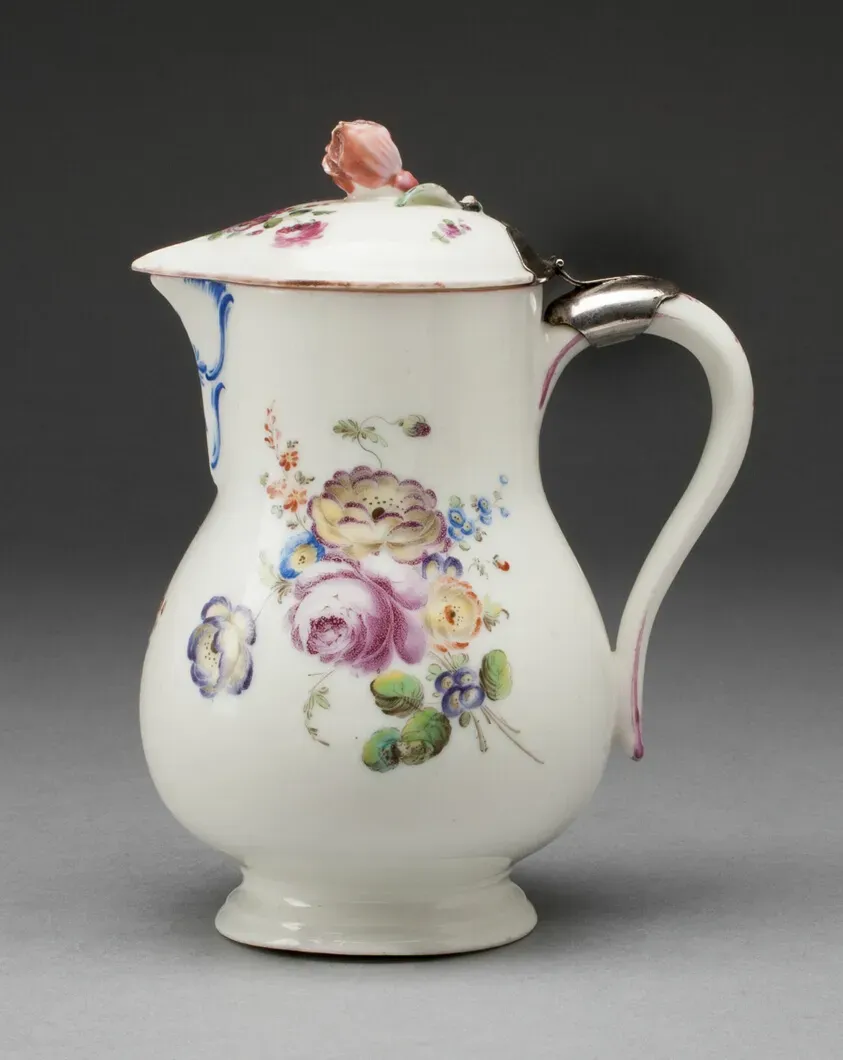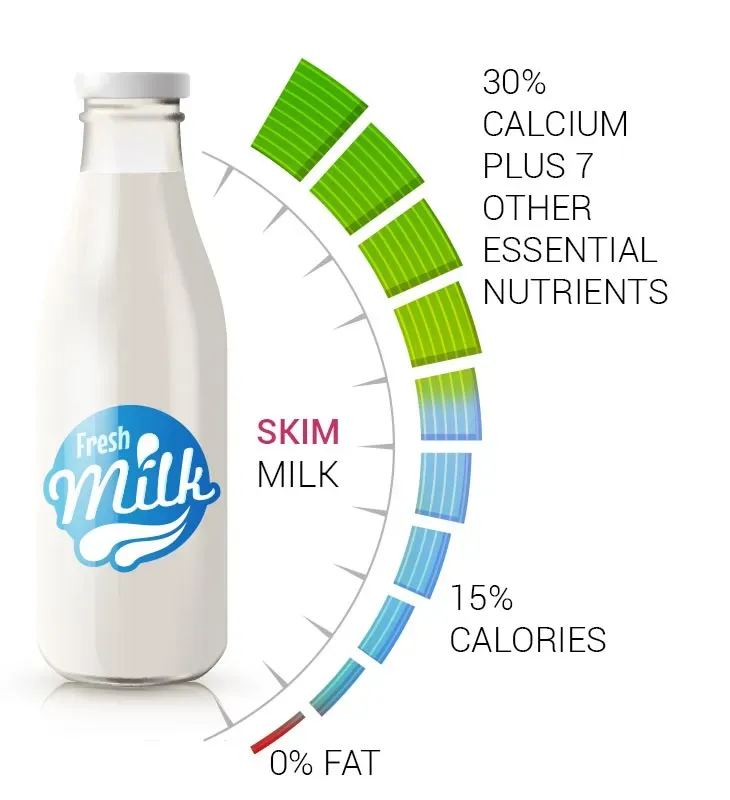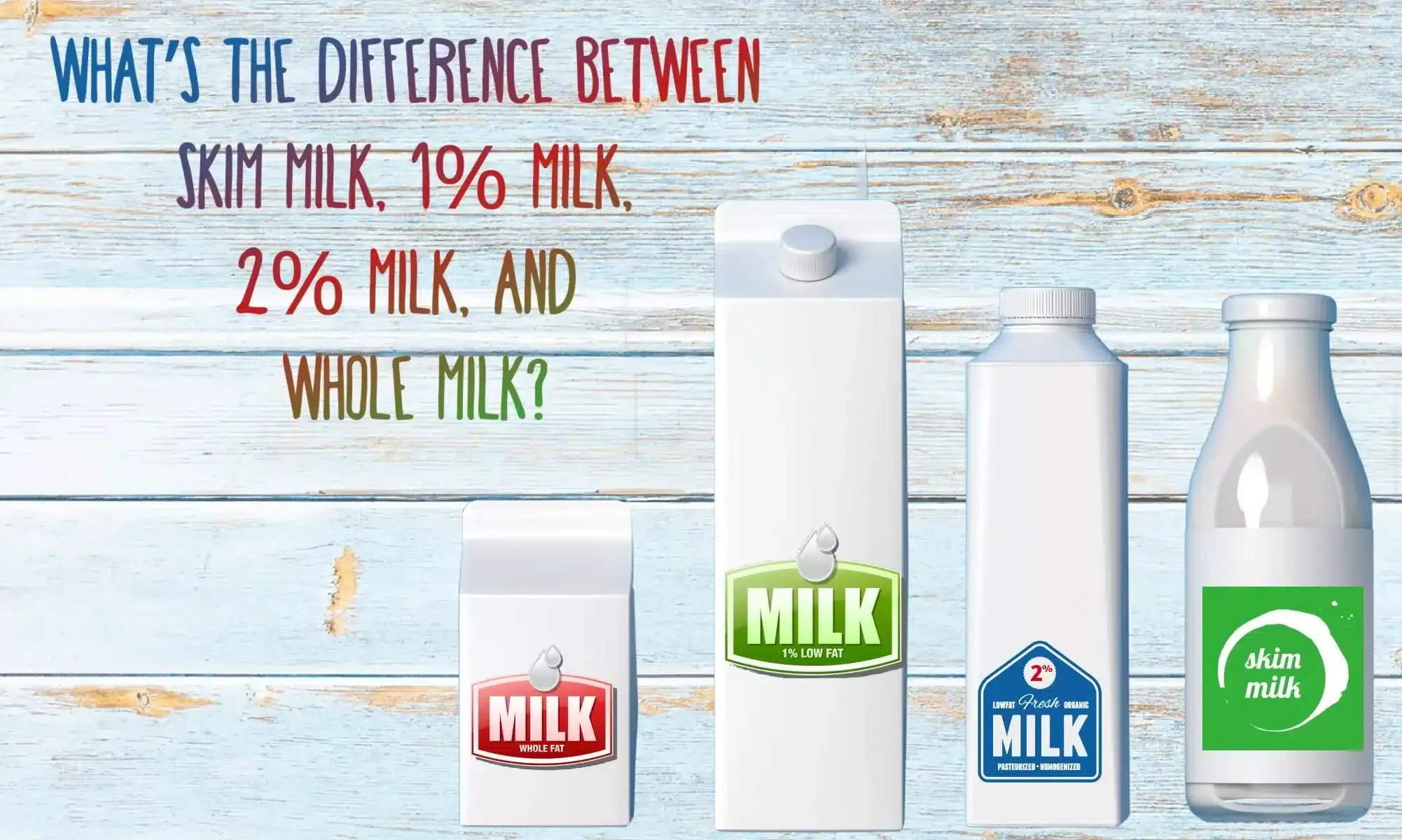Table of Contents
Walk down the dairy aisle and you're faced with a wall of options: whole milk, 2%, 1%, and then there's skim. It's enough to make your head spin if you're just trying to figure out what's what. A common question that pops up is,is skim milk low fat milk? Or is it something else entirely? The labels use terms like "low-fat," "reduced-fat," and "fat-free," which can feel less like clear descriptions and more like a dairy industry riddle. This article cuts through the confusion. We’re going to look at what "skim" actually means in terms of fat content, compare it to its low-fat and whole milk cousins, and talk about why people choose one over the other. By the end of this, you'll know exactly where skim milk stands in the fat hierarchy and have a clearer idea of which carton belongs in your shopping cart.
Is Skim Milk Low Fat Milk? Settling the Dairy Debate
Is Skim Milk Low Fat Milk? Settling the Dairy Debate
Cutting Through the Dairy Aisle Confusion
Alright, let's tackle the milk situation head-on. You're standing there, staring at a fridge full of options, and the labels aren't exactly shouting clear answers. "Whole," "2%," "1%," "Skim," "Fat-Free," "Low-Fat"... it feels like a test you didn't study for. The question that trips up a lot of people, and fair enough, is a simple one:Is Skim Milk Low Fat Milk? Settling the Dairy Debatestarts with understanding the basic lingo. It's not just splitting hairs; knowing the difference actually impacts what you're putting into your body, whether you're counting calories, watching fat intake, or just curious.
Defining Skim and Low-Fat
So, let's get straight to it. Skim milk is often called "fat-free" milk. This means the milk fat has been removed almost entirely during processing. We're talking less than 0.5 grams of milk fat per cup. Low-fat milk, on the other hand, typically refers to 1% milk. It has significantly less fat than whole milk (which is around 3.25% fat) but still retains some. Think of it as a spectrum: whole milk is at one end with the most fat, and skim milk is at the other, with low-fat (1%) and reduced-fat (2%) sitting somewhere in between. So, technically, skim milk isn't *low-fat*; it's *no-fat* or *fat-free* according to the standard definitions.
Let's break down the typical fat percentages you'll see on the carton:
- Whole Milk: About 3.25% milk fat
- Reduced-Fat Milk (2%): About 2% milk fat
- Low-Fat Milk (1%): About 1% milk fat
- Skim Milk (Fat-Free): Less than 0.5% milk fat
Skim Milk: What Exactly is "FatFree"?
Skim Milk: What Exactly is "FatFree"?
Skim Milk: What Exactly is "FatFree"?
So, you see "Fat-Free" on the skim milk carton and think, okay, zero fat. Simple, right? Well, almost. In the U.S., a product can be labeled "fat-free" if it contains less than 0.5 grams of fat per serving. For milk, a serving is typically one cup (240ml). So, when you grab that carton ofSkim Milk: What Exactly is "FatFree"?means it has been processed to remove virtually all the milk fat, leaving behind less than half a gram per cup. It's not literally *zero* fat, but it's close enough that the government lets them call it "fat-free." This is done by spinning the milk in a centrifuge, which separates the lighter fat from the heavier liquid. Think of it like a super-fast spin cycle for milk.
Decoding Milk Labels: LowFat, ReducedFat, and Whole
Decoding Milk Labels: LowFat, ReducedFat, and Whole
The Numbers Game on the Carton
so we've established that skim milk is basically fat-free. Now, let's look at its cousins: low-fat, reduced-fat, and whole milk.Decoding Milk Labels: LowFat, ReducedFat, and Wholereally comes down to understanding the percentage number printed on the carton. Whole milk is the original, straight from the cow (after pasteurization and homogenization, of course), clocking in at around 3.25% milk fat. This is the milk with the richest taste and creamiest texture because, well, fat carries flavor and provides that mouthfeel. Reduced-fat milk is typically 2% milk fat. The fat has been partially removed. Low-fat milk is usually 1% milk fat. Even more fat is gone compared to 2%.
Why All the Different Percentages?
Why bother with all these variations? It's mostly about consumer choice and nutritional goals. For decades, dietary guidelines pushed low-fat everything, and milk followed suit. Removing fat reduces calories and, obviously, fat intake. But it also changes the milk. As you strip away the fat, the milk gets thinner and the flavor profile shifts. Whole milk has that classic, full-bodied taste. 2% is a bit lighter but still has some richness. 1% is noticeably less creamy, and skim, as we discussed, is the thinnest with a very clean, almost watery taste to some palates. It's a trade-off between fat/calories and taste/texture.
Milk Type | Approximate Fat Content | Common Label |
|---|---|---|
Whole Milk | ~3.25% | Whole Milk |
Reduced-Fat Milk | ~2% | 2% Milk |
Low-Fat Milk | ~1% | 1% Milk |
Skim Milk | < 0.5% | Skim Milk, Fat-Free Milk |
Why People Pick Skim or LowFat Milk: Beyond Just Calories
Why People Pick Skim or LowFat Milk: Beyond Just Calories
More Than Just Cutting Calories
Why People Pick Skim or LowFat Milk: Beyond Just Caloriesisn't always a simple calorie calculation. Sure, shedding fat means fewer calories per glass, which is a big draw for many. But there are other angles. Some folks genuinely prefer the cleaner, less heavy taste of skim or 1% milk, especially in things like cereal or coffee where a rich, creamy texture might not be desired. For others, it ties into managing specific health conditions where reducing saturated fat intake is a priority, and every little bit counts. Think about someone with heart concerns or high cholesterol, where minimizing dietary fat is often recommended. Or maybe they're using it in a recipe where too much fat would change the outcome – a delicate sauce, perhaps, or a smoothie where they want the nutrients without the added richness. It's not always about dieting; sometimes it's just about finding the right tool for the job in the kitchen or fitting into a broader health plan.
Choosing Your Milk: Is Skim Milk Low Fat Milk the Best Bet for You?
Choosing Your Milk: Is Skim Milk Low Fat Milk the Best Bet for You?
It's Not One-Size-Fits-All
so we've dissected the fat content, looked at the labels, and figured out that skim milk is indeed fat-free, not just low-fat. Now comes the real question: which carton should *you* grab?Choosing Your Milk: Is Skim Milk Low Fat Milk the Best Bet for You?really depends on your personal goals, taste preferences, and dietary needs. There isn't a universal "best" milk out there, despite what some headlines might scream. If you're purely focused on cutting calories and saturated fat, skim milk seems like the obvious winner on paper. It provides the protein, calcium, and vitamins of milk with minimal fat. But if the thought of thin, less flavorful milk makes you sad, forcing yourself to drink skim might mean you just stop drinking milk altogether, missing out on those nutrients.
Matching Milk to Your Lifestyle
Consider what you're using the milk for. Are you pouring it in your coffee? Some find that skim milk makes coffee taste bitter or weak, while whole milk adds a desirable richness. Is it for baking? The fat content can significantly impact the texture of baked goods. Are you trying to gain weight, maintain weight, or lose weight? Whole milk packs more calories per serving, which might be helpful or unhelpful depending on your aim. Someone training intensely might appreciate the slightly higher calorie and fat content of 2% or whole milk for energy and recovery. On the flip side, someone managing cholesterol might lean heavily towards skim or 1%. It's about finding the balance that works for your body and your life, not just picking the lowest number on the label because someone told you to.
- Consider your taste preference – do you like it rich or light?
- Think about how you'll use the milk – drinking, cooking, coffee?
- Factor in your dietary goals – calorie intake, fat limits?
- Consult a doctor or dietitian if you have specific health concerns.
Finding Your Dairy Sweet Spot
Ultimately, deciding ifis skim milk low fat milkis the right choice for you comes down to personal evaluation. Maybe you try 2% and find it's the perfect compromise between taste and fat content. Perhaps you stick with whole milk because you only use a splash in your tea and the flavor is paramount. Or maybe you genuinely prefer the clean taste of skim milk in your protein shake. The key is to make an informed choice based on the facts about milk fat and how those facts align with what you want and need. Don't feel pressured to pick the "healthiest" option if you won't actually drink it or if it doesn't fit your overall diet and enjoyment of food. Your milk carton shouldn't be a source of dietary stress.
Wrapping Up: Is Skim Milk Low Fat Milk? Not Exactly
So, to circle back to the original question,is skim milk low fat milk? Not quite. Skim milk is essentially fat-free milk, meaning it has less than 0.5 grams of fat per serving. Low-fat milk, on the other hand, specifically refers to milk with 1% or 2% milkfat. While both are lower in fat than whole milk, they aren't the same thing. Choosing between them often comes down to dietary goals, taste preference, and how you plan to use the milk. There's no single "best" option, just the one that fits your needs.
